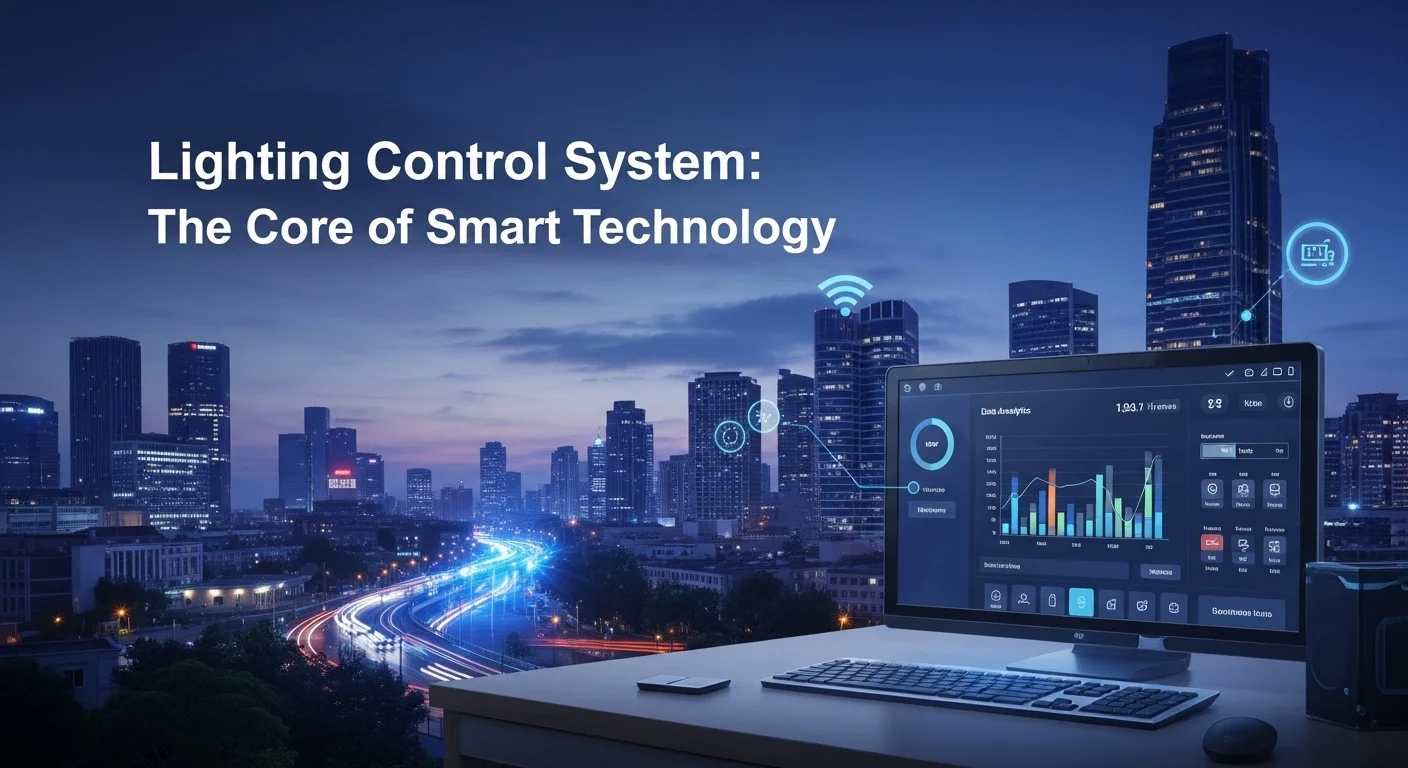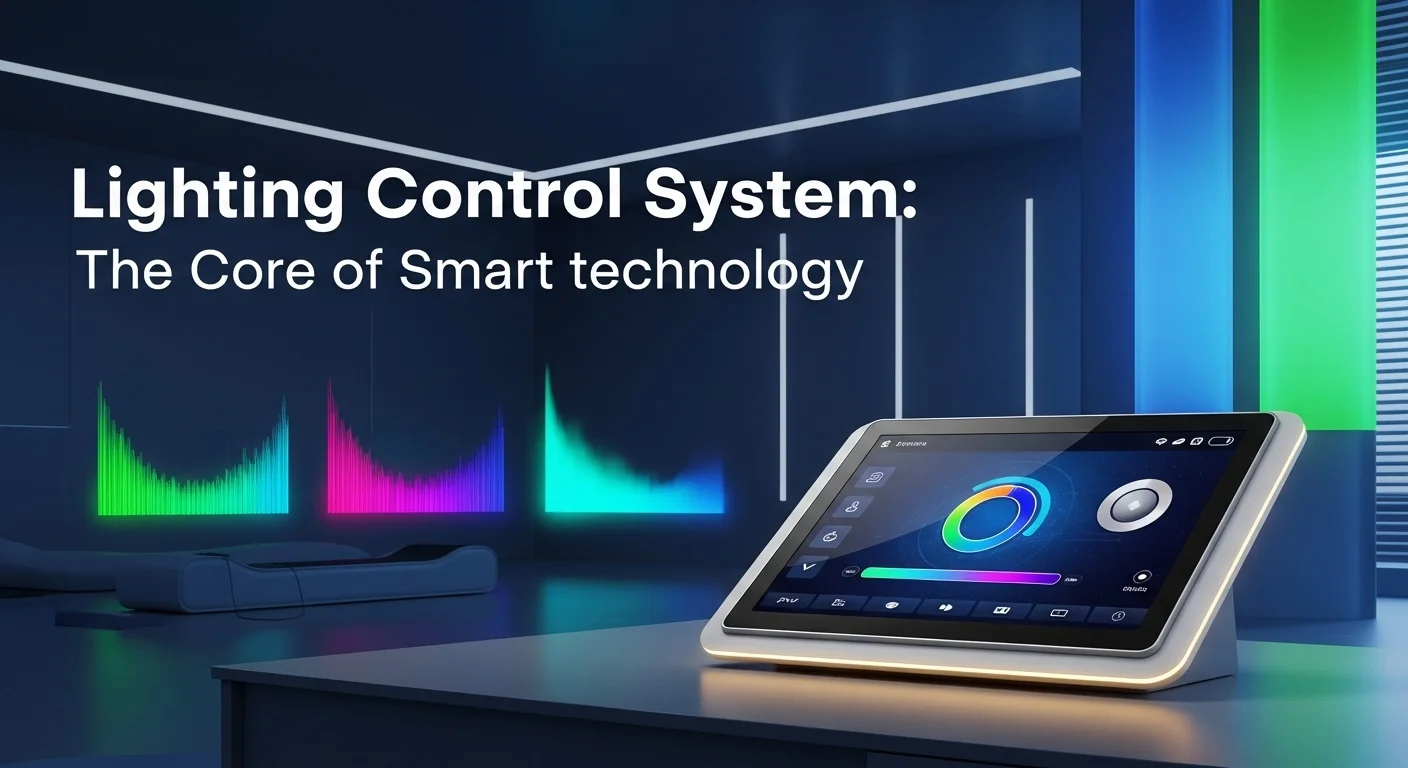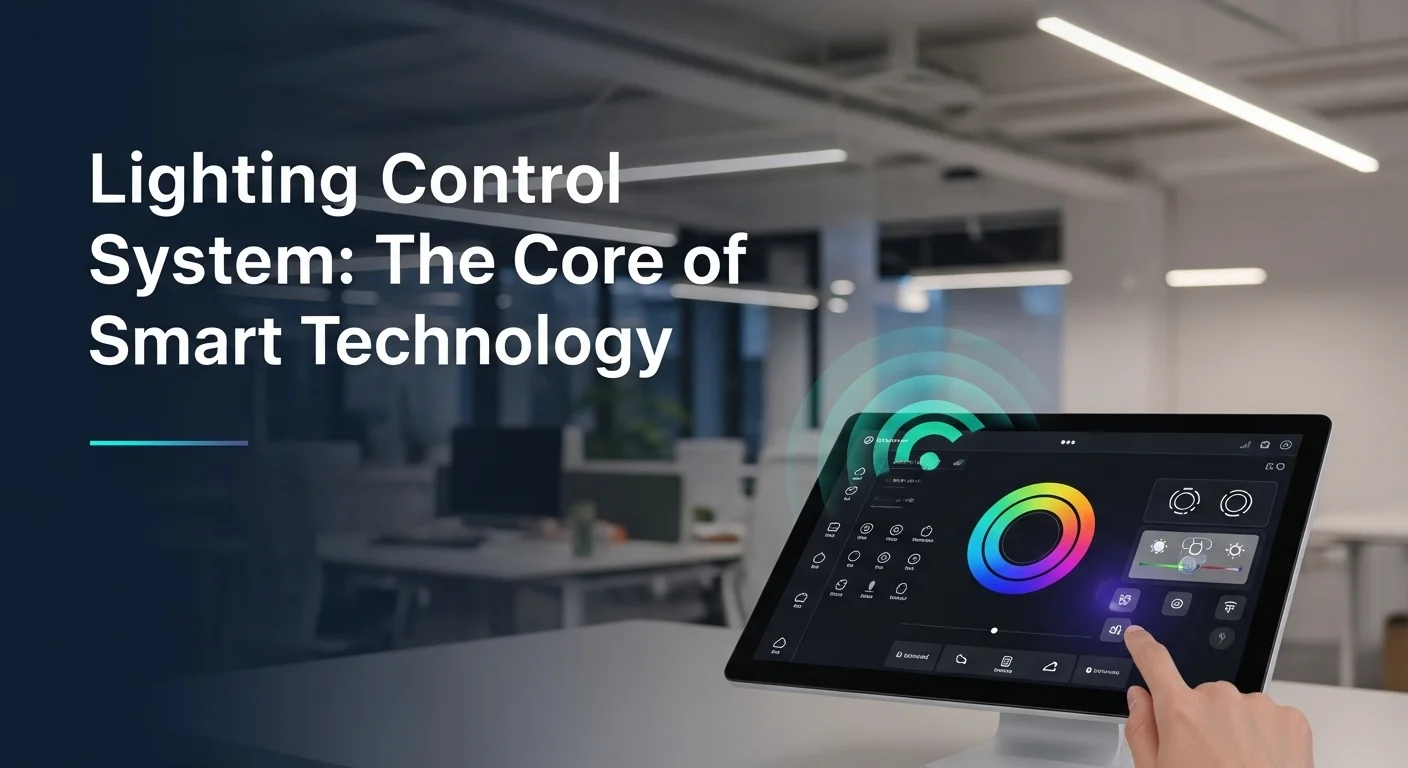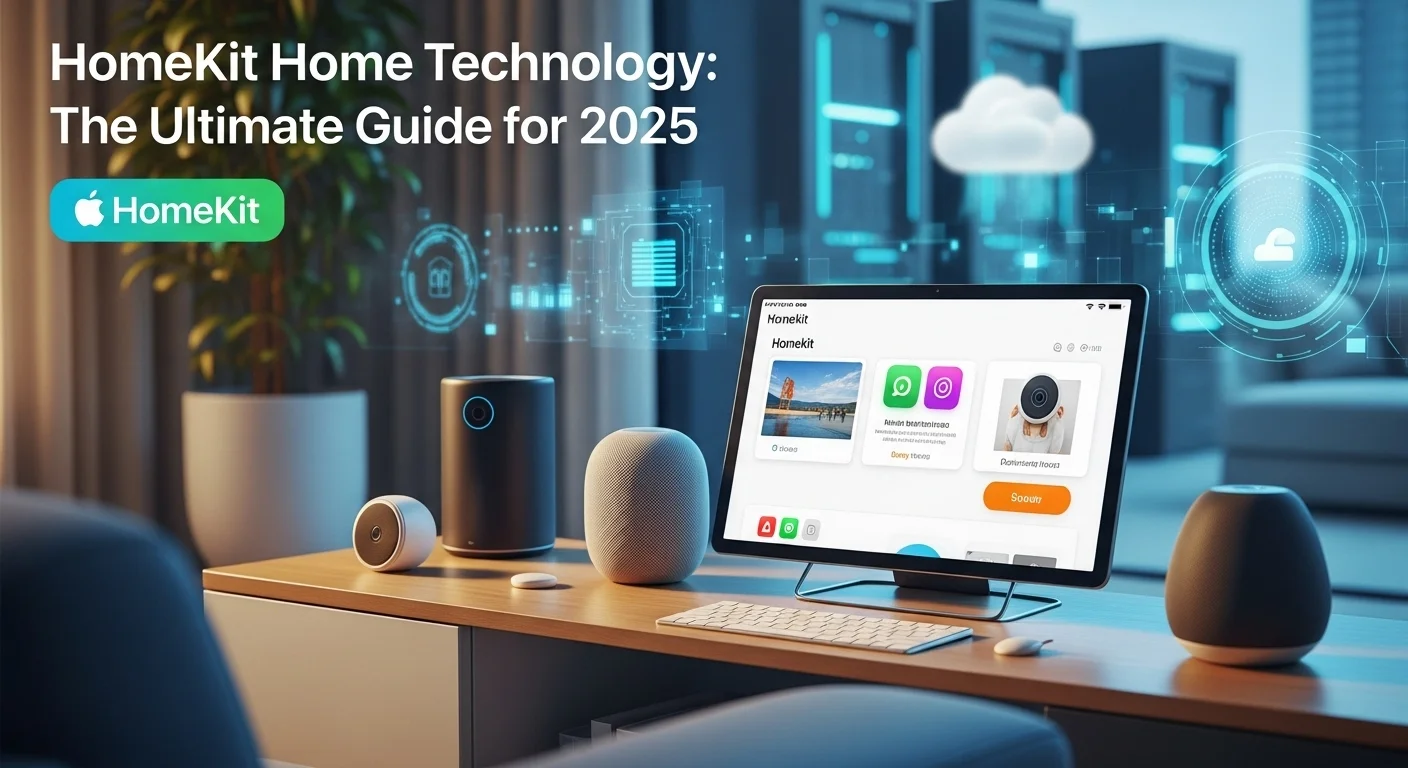Smart Lighting Control Systems: My Expert Guide to a Smarter Home & Business

Executive Summary
For years, I've seen clients' eyes light up (pun intended) when they experience a true lighting control system for the first time. It's so much more than a fancy dimmer switch; it's the brain that makes a space feel truly 'smart.' This intelligent network learns your routines to provide the perfect light exactly when and where you need it, saving you money on energy bills and adding a layer of convenience and security you'll wonder how you ever lived without. It goes far beyond a simple on/off switch. By weaving together sensors, timers, and smart controllers, these systems give you total command. For a business, this means real energy savings and a more productive team. For homeowners like me, it's about creating the perfect mood for any moment. Whether you're curious about high-end systems like Control 4 and Elan or just want a more responsive home, understanding smart lighting is the first step. In this guide, I'll share my experience to help you navigate this game-changing technology.
Table of Contents
Table of Contents
What is a Lighting Control System, and why should you care?
In my line of work, I see a lot of tech, but a lighting control system is one of the few things that truly changes how you live and work in a space. At its core, it's a smart network of devices that automates and controls the lighting in a building. Forget just flipping a switch. We're talking about a system that can dim, change color, and turn on or off based on time, your presence, or even the amount of sunlight streaming through the window. Its real magic, however, comes from its ability to connect with other technologies. It's the foundation for any truly smart building or home, a piece of tech that quietly works in the background to make your environment more efficient, comfortable, and beautiful.
From Simple Switches to Smart Brains: The Evolution
I remember when the height of sophistication was installing a dimmer switch. It gave us a little bit of control over the mood, but it was still a one-trick pony. The real revolution happened when lighting went digital and connected to the Internet of Things (IoT). That simple switch evolved into an intelligent, data-driven network. A modern light controlling system is no longer just waiting for your command; it’s making its own smart decisions. It can learn your habits, sense when a room is empty, and adjust to the time of day, all thanks to AI and a web of connected sensors. This shift from a manual tool to an automated resource is what makes it so critical in today's tech landscape.
The Building Blocks: Core Components of a Modern System
To really get what these systems can do, you need to know what they're made of. It's like understanding the ingredients in a recipe. They all work together to create something amazing:
- Controllers: This is the 'brain' of the whole operation. It takes in all the information from sensors and keypads, thinks about it, and then tells the lights what to do. In powerful systems like a Control 4 lighting system or an Elan lighting control system, this brain doesn't just manage lights; it orchestrates your music, climate, and security too.
- Input Devices (Sensors and Interfaces): These are the system's senses. Occupancy sensors are the 'eyes' that detect when someone enters a room, so you never have to worry about lights being left on. Daylight sensors measure the sun's brightness and dim the indoor lights to save energy, a cool trick called 'daylight harvesting.' And the interfaces—elegant keypads, touchscreens, or an app on your phone—are how you talk to the system directly.
- Output Devices (Luminaires and Drivers): These are simply the lights themselves. Today, that almost always means LEDs because they're efficient and highly controllable. The driver is a small but crucial part that feeds the right amount of power to the LED, allowing for that smooth, flicker-free dimming we all love.
- Network Infrastructure: This is the nervous system that connects everything. It can be a reliable wired network, which I usually recommend for new construction, or a flexible wireless one using languages like Zigbee or Z-Wave, which are perfect for adding smarts to an existing home.
The Technological Importance in Business and Smart Homes
Putting it all together, this technology has a huge impact. For businesses, it's a strategic tool. Lighting is a massive energy hog in commercial buildings, sometimes up to 40% of the electricity bill. A smart system can easily cut that in half, which is a huge win for both the budget and the planet. But it's also about people. Better light quality, especially systems that mimic natural daylight patterns, can genuinely make employees more focused and comfortable. For savvy facility managers, the data these systems collect on room usage is pure gold for optimizing the workplace.
At home, it's all about lifestyle. As a specialist, I've programmed countless domestic lighting control systems, and the goal is always to make life easier and more enjoyable. A Control 4 lighting system isn't just about turning lights on; it's about pressing an 'Entertain' button that dims the lights, cues up your favorite playlist, and sets the perfect vibe instantly. An Elan lighting control system gives you that same unified control, making every piece of tech in your home work together through one beautiful, simple interface. It adds convenience, makes your home more secure by mimicking your presence when you're away, and gives you the tools to make your home look its absolute best. A well-designed lighting system is no longer a luxury; it's a fundamental part of a modern, intelligent home.

My Complete Guide to Choosing a Lighting Control System
Diving into lighting control can feel overwhelming. There are so many brands, protocols, and buzzwords. Over the years, I've installed and troubleshot nearly every type of system out there, and I've learned what truly matters. This guide is the culmination of that experience, designed to help you understand the tech, compare the big players, and make the right choice for your home or business.
The Language of Light: Understanding the Protocols
At the core of every system is a protocol, which is just the language the devices use to talk to each other. Think of it like this: some languages are formal and structured, while others are more casual and flexible. Your choice depends on the job at hand.
Wired Protocols: The Gold Standard for Reliability
When a client is building a new commercial space or a high-end home, I almost always recommend a wired system. It's rock-solid and immune to the wireless interference that can plague a busy office or a home full of gadgets.
- 0-10V Dimming: This is the old, reliable pickup truck of lighting control. It's a simple analog signal that gets the job done, but it's a one-way street—it sends a command but can't report back on the status of the light.
- DALI (Digital Addressable Lighting Interface): This is my go-to for complex commercial projects. DALI is a smart, two-way digital conversation. Every light gets its own address, so you can control them individually or in groups with software, not wiring. It's incredibly flexible and powerful, especially the newer DALI-2 standard.
- DMX (Digital Multiplex): If you've ever seen a building facade or a bridge lit up with dazzling, color-changing effects, you were likely looking at DMX. It was born in the theater world and is the undisputed champion for fast, dynamic, and colorful lighting control.
Wireless Protocols: The Key to Flexibility
For existing homes and buildings, running new wires is often a non-starter. That's where wireless protocols are a lifesaver. They've gotten so reliable that I now use them in many new projects, too.
- Zigbee & Z-Wave: These are the two most popular languages for smart homes. They both create a 'mesh network,' where each device can talk to its neighbors, passing messages along. This makes the network incredibly robust. If one light loses connection, the message just finds another route. Many brands you know, like Philips Hue (Zigbee), use these.
- Bluetooth Mesh: Bluetooth has grown up. It's no longer just for your headphones. Bluetooth Mesh is a powerful and fast option that's gaining a lot of ground in both commercial and residential lighting because it's so easy to set up.
- Wi-Fi: Many DIY smart bulbs connect directly to your Wi-Fi. It's simple, but I offer a word of caution: if you add too many devices, you can clog up your network and slow down your internet.
System Showdown: Control 4 vs. Elan and Other Players
Choosing a system is about more than just technology; it's about the experience you want to create. Here's my take on some of the leading brands.
The Integrated Powerhouses: Control4 and Elan
When you want your lights to work in perfect harmony with your music, security, and climate control, you step up to a professionally installed system like Control4 or Elan. I've installed both, and the choice often comes down to personality.
- Control 4 Lighting System: I think of Control4 as a powerful, endlessly customizable toolkit. Its lighting control is world-class, but its true strength is how it integrates *everything*. You can create incredibly detailed scenes. For example, I programmed a 'Cooking' scene for a client that brightens the kitchen island lights, turns on their favorite cooking playlist, and displays a recipe on a nearby screen. It's for the person who loves to have deep control over their environment.
- Elan Lighting Control System: Elan's philosophy is all about making powerful technology feel effortless. Its user interface is consistently praised as one of the most intuitive and beautiful in the industry. The Elan lighting control system is just as capable as its competitors, but it wraps that power in a package that just feels... simple. For clients who are less tech-savvy or who just want everything to work flawlessly without a steep learning curve, Elan is often the perfect fit.
Other Key Players
Of course, the world is bigger than just two brands. Lutron basically invented the dimmer and offers everything from the DIY-friendly Caséta system to the ultra-high-end HomeWorks. For the ultimate tech hobbyist, open-source platforms like Home Assistant offer unparalleled freedom to mix and match brands, but be prepared to roll up your sleeves and get technical.
My Blueprint for Business Implementation
When a business asks me for help, I don't just talk about products. I walk them through a strategic process to ensure they get the results they need.
- Define Your 'Why': First, we figure out the main goal. Is it slashing energy costs? Making employees more comfortable? Creating a 'wow' factor for customers? The 'why' dictates every other choice.
- Pick Your Tools: Based on the goal, we select the right tech. A new build might get a robust DALI system. A retail retrofit might be perfect for flexible Bluetooth Mesh. A high-tech boardroom screams for the AV integration of a Control 4 lighting system.
- Draw the Map: We work with designers to create a detailed plan—where every light, sensor, and keypad will go. This is the blueprint for success.
- Build and Test: Professional installation is key. Afterwards, I spend hours commissioning the system—programming, testing, and fine-tuning everything until it works exactly as planned.
- Train the Team: A system is useless if no one knows how to use it. The final, crucial step is training the staff so they can take full advantage of their new, smarter workplace.
By following a clear strategy, you can move beyond simply buying technology and start making a smart investment. Whether it's the deep customization of a Control 4 lighting system or the elegant simplicity of an Elan lighting control system, the right choice, well-implemented, will transform your space.

My Pro Tips for Mastering Your Lighting Control System
Getting a lighting control system installed is just the beginning. The real magic happens when you fine-tune it to perfection. Over the years, I've learned a few tricks that can take an installation from 'good' to 'life-changing.' Here are some of my best practices and strategies to help you get the most out of your investment.
Best Practices I Swear By
A great lighting experience starts with a smart design philosophy. Don't just think about fixtures; think about feelings.
Design for Humans, Not Just for Rooms
The most exciting development in lighting is Human-Centric Lighting (HCL). It's a simple but profound idea: use light to support our natural body clock. Imagine your lights gently waking you up with a soft, cool glow, just like the sunrise. Then, as the day winds down, the light shifts to a warm, dim amber, signaling to your brain that it's time to relax. I've seen this dramatically improve sleep patterns in clients' homes and boost focus in offices. When you're planning your system, make sure you ask for tunable-white fixtures and a controller that can automate these daily rhythms.
Learn to Layer Your Light
Professional designers never use just one type of light. They use layers, and your control system is the conductor that orchestrates them. Think in three layers:
- Ambient Lighting: This is your general, room-filling light.
- Task Lighting: This is focused light for a specific job, like reading a book or chopping vegetables.
- Accent Lighting: This is the 'jewelry' of the room—light that highlights art, plants, or interesting architecture.
A system like the Control 4 lighting system or Elan lighting control system lets you create scenes that mix these layers perfectly. A 'Movie Night' scene might drop the ambient light to 10%, kill the task lights, but keep your accent lights on at 30% to give the room a soft glow. It’s this level of control that creates truly stunning and functional spaces.
Think About Tomorrow, Today
Technology moves fast. To avoid having an obsolete system in five years, choose platforms built on open standards (like DALI-2) or from companies like Control 4 and Elan known for strong integration and updates. My advice: if you're building or renovating, run extra low-voltage wire. It costs almost nothing to do it now and will save you a huge headache if you want to add a keypad or sensor down the road.
Don't Forget Cybersecurity
I can't stress this enough: don't let your smart lights become a dumb security risk. Every connected device is a potential door into your network. Isolate your lighting system on its own network (a VLAN) so it can't talk to your sensitive data. Always change default passwords and keep your system's firmware updated. This isn't just a tech chore; it's basic digital hygiene to protect your home and privacy.
My Favorite Optimization Strategies
Once your system is up and running, a little fine-tuning goes a long way.
Become a Scene-Tuning Master
Live with your system for a few weeks, then revisit the programming. Is the 'Good Morning' scene a little too bright? Is the motion sensor in the hallway too sensitive? Don't be afraid to tweak the settings. The best systems are the ones that are perfectly dialed into the user's actual life, not just the installer's initial guess.
Let the Sun Do the Work
Use the astronomical clock feature built into any good system. It knows exactly when the sun rises and sets in your location every day of the year. This is perfect for automating landscape and exterior lighting. No more adjusting timers twice a year!
Make Your Systems Work Together
The real power comes from integration. Here are a few of my favorite combinations:
- Security + Lighting: If your alarm goes off, have every light in the house flash to 100%. It's a massive deterrent for intruders and a clear signal for help.
- AV + Lighting: The classic example for a reason. When I press 'Play' on my remote, my Elan lighting control system automatically dims the lights to the perfect viewing level. It's a small touch that feels incredibly luxurious.
- Shades + Lighting: This is the ultimate energy-saving duo. On a hot day, your shades can automatically lower to block the sun, while your lights adjust to maintain the perfect brightness inside.
The Future is Already Here: AI and Hyper-Personalization
The next frontier is already upon us: Artificial Intelligence. Future lighting systems won't just follow commands; they'll anticipate your needs. In my own home, my system is already starting to learn my routines, turning on the entryway lights just as I pull into the driveway. It knows from my shared calendar that I have a video call and sets the lights in my office to make me look my best on camera. This is where we're headed—a world where our environments are truly responsive and personalized. The amazing technology in today's domestic lighting control systems is the foundation for that incredibly smart future.
Expert Reviews & Testimonials
Sarah Johnson, Business Owner ⭐⭐⭐⭐
As a small business owner, I found this guide helpful for understanding the basics of lighting control. I would have loved to see a few more real-world case studies for businesses my size, but it's a great starting point.
Mike Chen, IT Consultant ⭐⭐⭐⭐
Solid overview of lighting control systems. As an IT consultant, I appreciated the breakdown of protocols like DALI and Zigbee. It explained the technical side without being overly dense. Good resource.
Emma Davis, Tech Expert ⭐⭐⭐⭐⭐
Fantastic and thorough article! I'm specializing in smart home tech, and this piece connected all the dots for me, from high-end systems like Control4 to the importance of cybersecurity. A must-read.



